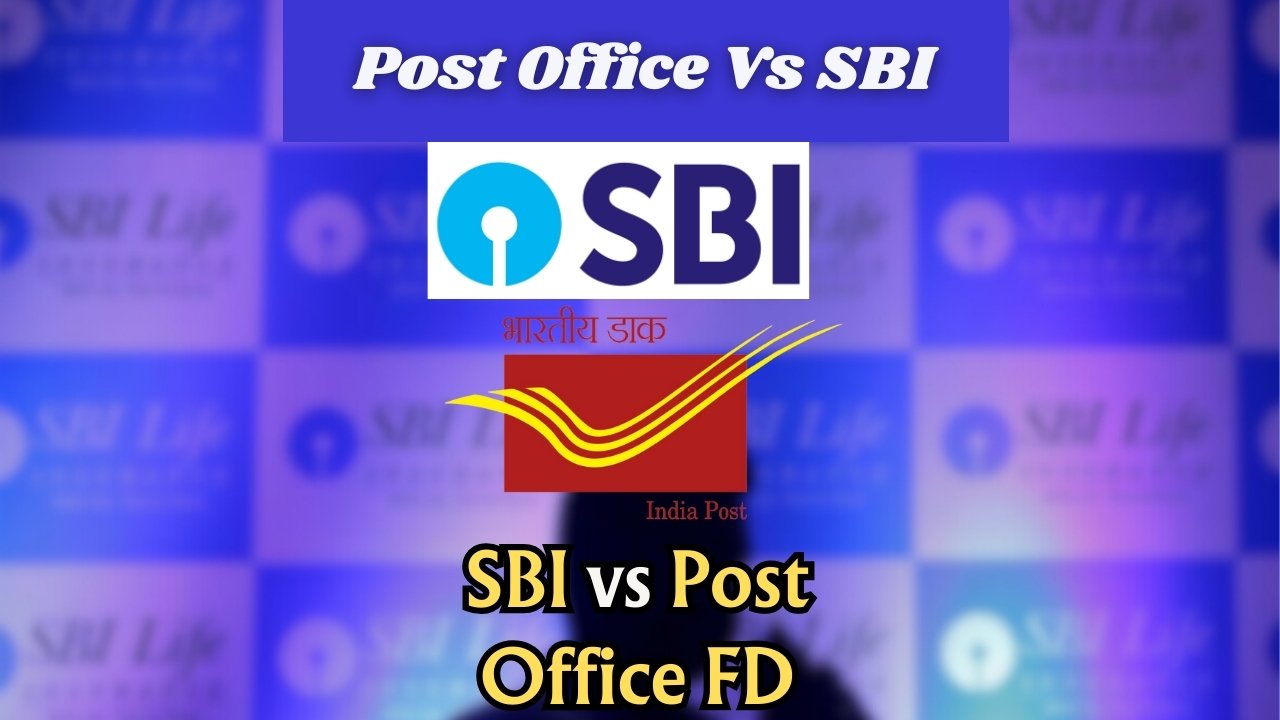Fixed deposits : In a financial landscape dominated by uncertainty and inflation concerns, fixed deposits remain one of the safest investment options for millions of Indians. Among the most trusted institutions offering FDs are the State Bank of India (SBI) and India Post. But who offers better returns in 2025? Which scheme is safer, more flexible, and more rewarding? Let’s break it all down.
Why Fixed Deposits Still Matter in 2025
Fixed deposits have retained their popularity for decades. While mutual funds and stocks offer higher returns, they also come with risks. For conservative investors, especially senior citizens and salaried individuals, FDs offer a guaranteed return, capital safety, and flexible tenure options.
Key reasons why FDs are preferred:
- Guaranteed returns with no market risk
- Tax-saving options under Section 80C (for 5-year term)
- Easy liquidity and premature withdrawal (with minimal penalty)
- Suitable for all age groups, especially senior citizens
SBI Fixed Deposit Features and Interest Rates (2025)
The State Bank of India (SBI), being India’s largest public sector bank, offers a range of fixed deposit options tailored to various investor needs.
Highlights of SBI FD in 2025:
- Tenure: 7 days to 10 years
- Interest Rate: 3.00% to 7.10% (for general public)
- Senior Citizen Rate: Up to 7.60%
- Premature Withdrawal: Allowed with 0.50-1% penalty
- Loan Facility: Available against FD
- Minimum Investment: ₹1,000
- Maximum: No upper limit
SBI FD Interest Rates – April 2025
| Tenure | General Public Rate | Senior Citizen Rate |
|---|---|---|
| 7 days to 45 days | 3.00% | 3.50% |
| 46 days to 179 days | 4.50% | 5.00% |
| 180 days to 210 days | 5.25% | 5.75% |
| 211 days to < 1 year | 5.75% | 6.25% |
| 1 year to < 2 years | 6.80% | 7.30% |
| 2 years to < 3 years | 7.00% | 7.50% |
| 3 years to 5 years | 6.90% | 7.40% |
| 5 years and above | 7.10% | 7.60% |
Post Office Fixed Deposit Features and Interest Rates (2025)
India Post also offers fixed deposit schemes known as Post Office Time Deposits (POTD) under the National Savings Scheme. These are backed by the Government of India and are considered extremely safe.
Highlights of Post Office FD in 2025:
- Tenure: 1, 2, 3, and 5 years only
- Interest Rate: 6.90% to 7.50%
- Compounding: Annually but paid quarterly
- Premature Withdrawal: Allowed after 6 months with interest penalty
- Tax Saving Benefit: Available for 5-year FD under Section 80C
- Minimum Investment: ₹1,000
- Maximum: No upper limit
See more : Don’t Throw Away Burnt Cash
Post Office FD Interest Rates – April 2025
| Tenure | Interest Rate | Compounding | Tax Saving Eligible |
|---|---|---|---|
| 1 Year | 6.90% | Annual | No |
| 2 Years | 7.00% | Annual | No |
| 3 Years | 7.10% | Annual | No |
| 5 Years | 7.50% | Annual | Yes |
SBI vs Post Office FD – Interest Rate Comparison Table
Here’s a head-to-head comparison between SBI and Post Office FDs:
| Tenure | SBI FD Rate (General) | Post Office FD Rate | Winner |
|---|---|---|---|
| 1 Year | 6.80% | 6.90% | Post Office |
| 2 Years | 7.00% | 7.00% | Tie |
| 3 Years | 6.90% | 7.10% | Post Office |
| 5 Years | 7.10% | 7.50% | Post Office |
| Senior Rate | Up to 7.60% | No additional rate | SBI |
| Compounding | Quarterly | Annually | SBI |
| Premature Exit | Yes (low penalty) | After 6 months | SBI |
Key Differences Between SBI and Post Office FDs
- Interest Rates: Post Office FDs offer slightly higher rates for regular investors, especially for long tenures like 5 years.
- Senior Citizens: SBI clearly wins here with an additional 0.50% benefit.
- Premature Withdrawal: SBI offers more flexible and accessible withdrawal options.
- Loan Against FD: SBI allows this feature; Post Office does not.
- Compounding Frequency: SBI provides quarterly compounding; Post Office compounds annually but pays quarterly.
- Tax Benefit: Both offer tax-saving 5-year FDs under Section 80C.
Which One is Safer – SBI or Post Office?
Both options are government-backed and extremely safe:
- SBI is a government-owned bank under RBI regulation, and deposits are insured up to ₹5 lakh.
- Post Office FDs are directly backed by the Government of India with sovereign guarantee.
So, in terms of safety, both are equally trustworthy.
Who Should Choose SBI FD?
- Senior citizens looking for extra interest
- Investors needing flexible tenure and premature withdrawal
- Those looking for easy access to loans against FD
Who Should Choose Post Office FD?
- Long-term investors looking for slightly better returns
- People in rural/semi-urban areas without banking access
- Taxpayers aiming to claim Section 80C benefits with a 5-year plan
SBI or Post Office FD?
If you are a senior citizen or want flexible withdrawal, SBI is the better choice.
If you are a long-term investor looking for higher interest and tax benefits, Post Office FD takes the lead.
Ultimately, both are secure, stable, and serve slightly different needs. Depending on your financial goals, investment horizon, and liquidity requirements, you can even diversify between both options for maximum benefit.
The interest rates and features mentioned are as per latest April 2025 updates. These are subject to change as per RBI and Ministry of Finance guidelines. Readers are advised to verify with official sources before making investment decisions.






